#canine science
Text
Getting the Facts Straight
About Chocolate and Dogs
In recent weeks, there has been a popular meme circulating on social media that states:
“Chocolate is toxic to dogs. It doesn’t just poison them once but is repeatedly reabsorbed into their body and poisons them many times. This is why it is so dangerous”
A Science Dog reader brought the meme to my attention and asked me about its veracity. In response, I posted a…

View On WordPress
#canine nutrition#canine science#dog#dog nutrition#dog science#dogs#dogs and chocolate#feeding dogs#feeding dogs chocolate
3 notes
·
View notes
Text
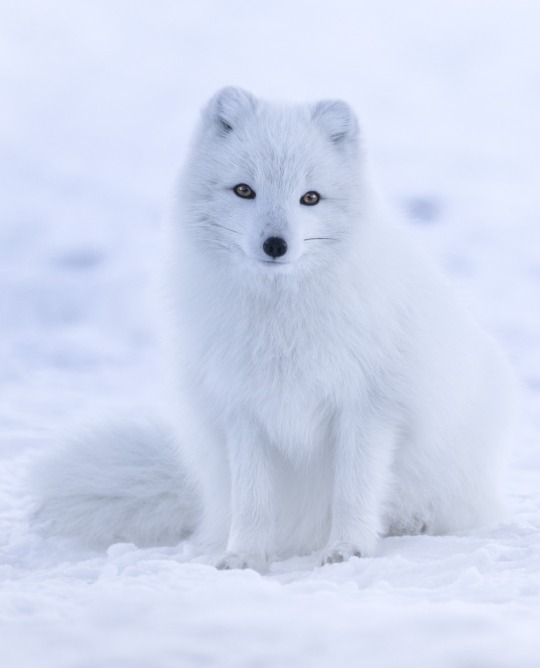
Found in the polar Arctic regions of North America, Europe, and Asia, the Arctic fox (Vulpes lagopus) is perfectly equipped for life below zero. This carnivore reduces its exposure to winter weather through a variety of adaptations, including compact body size, small ears, and short limbs. But the Arctic fox is also a seasonal fashionista. During winter, this species sports a dense coat of white fur that helps insulate it from the cold. Did you know? It can withstand temperatures of up to −90°F (-67.8°C). By comparison, frostbite can affect humans at temperatures below 31°F (-0.6°C)!
Photo: Jonathen Pie, CC0 1.0, Wikimedia Commons
#science#nature#natural history#animals#cool animals#fox#arctic#arctic fox#amazing animals#did you know#fact of the day#snow#winter#canine
686 notes
·
View notes
Text
It's no surprise that your dog can learn to sit when you say "sit" and come when called. But a study appearing March 22 in the journal Current Biology has made the unexpected discovery that dogs generally also know that certain words "stand for" certain objects. When dogs hear those words, brain activity recordings suggest they activate a matching mental representation in their minds.
"Dogs do not only react with a learned behavior to certain words," says Marianna Boros of the Department of Ethology at the Eötvös Loránd University, Budapest, Hungary, one of the paper's co-first authors. "They also don't just associate that word with an object based on temporal contiguity without really understanding the meaning of those words, but they activate a memory of an object when they hear its name."
Continue Reading.
353 notes
·
View notes
Text
Animal of the Day!
Falkland Islands Wolf (Dusicyon australis)

(Photo by Kane Fleury)
Extinction Date- 1876
Habitat- Falkland Islands
Size (Weight/Length)- 1.6 m
Diet- Birds; Insects; Carrion
Cool Facts- The Falkland Islands wolf was the only native land mammal of the Falkland Islands off the southernmost tip of Argentina. These wolves were the first canine to go extinct in modern times. They excelled in hunting nesting birds and seals and may have scavenged washed up whale carcasses. When Charles Darwin visited the Islands, he predicted that the wolves would soon go extinct due to human interaction. The wolves were rapidly hunted for their furs and out of fear of them killing livestock, resulting in the last Falkland Islands wolf being killed in 1876. The closest living relative to these wolves are the maned wolves of mainland South America. Maned Wolves are near threatened due to habitat destruction but luckily conservation efforts in breeding, habitat protection, and the education of locals is keeping their population relatively steady.
Rating- 12/10 (Canis antarcticus is no longer used as a scientific name but man that taxidermy does the wolf dirty.)
#animal of the day#animals#mammals#wolves#but not really#canine#thursday#october 5#falkland islands wolf#biology#science#conservation#the more you know#extinct#taxidermy#extinctober#maned wolf
229 notes
·
View notes
Text
Atelocynus microtis
This odd-looking canine is called a short-eared dog. They are so elusive, though, that they are often called “ghost dogs.” Sightings of them are very rare, which makes research on them difficult.

There’s been a lot of confusion over what the short-eared dog is. It used to be in the lycalopex genus with the zorros and the cerdocyon genus with the crab-eating fox, but now it’s in its own genus- atelocynus.
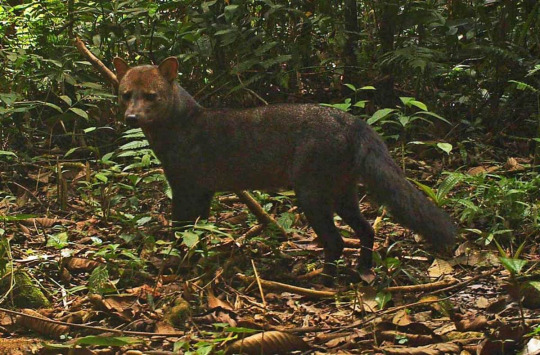
Short-eared dogs live in the Amazon rainforest in Peru, Columbia, Ecuador, Bolivia, and Brazil. They try to live far away from people, making them highly susceptible to habitat loss. Because of this it is suspected that their population is decreasing, but because sightings of them have always been rare it’s hard to estimate how many are left.
Studies of short-eared dog scat suggests that they eat lots of fruit, rodents, and fish. The fish in their diets along with their partially webbed feet could mean that short-eared dogs spend a lot of time in water, similar to the bush dog.
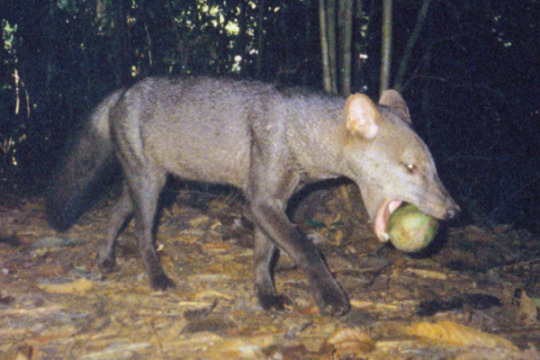
Much of what is known about these elusive animals comes from one short-eared dog named Oso, who was found when he was a puppy by a logger. He was then raised with pet dogs until a wildlife veterinarian named Renata Leite Pitman took over his care. By observing how Oso found food and interacted with other animals, Pitman learned about parts of the short-eared dogs’ life that scientists previously knew almost nothing about.
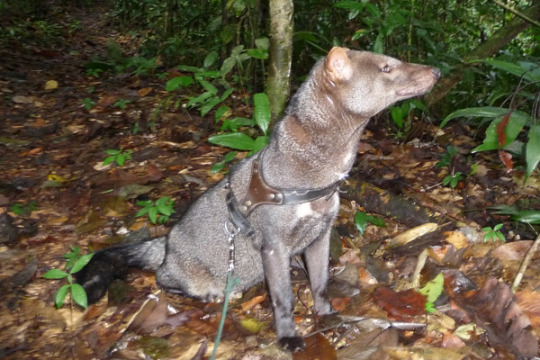
Before Pitman’s work with Oso, virtually nothing was known about short-eared dog vocalization, or the sounds they make. The veterinarian observed that Oso was very quiet but whined or “roared” when he was uncomfortable, and he occasionally made an unusual call that was “similar to some species of owl calls.”
When Oso was around 4 years old he was released into the wild with a tracker, allowing researchers to continue to learn about short-eared dogs.
I rate these very mysterious ghost dogs 13/10. They have a very distinctive look.

Photo credits:
(1) Galo Zapata-Rios (2) Owlcation (3) Renata Leite Pitman (4) Renata Leite Pitman (5) eMammal
#short eared dog#animals#biology#nature#science#wildlife#zoology#animal#dog#dogs#wild#canines#ghost dog#South American animals#South America#rainforest
2K notes
·
View notes
Text

african wild dog 😎
#african hunting dog#african wild dog#dog#canines#canids#wolves#coyotes#foxes#canidae#carnivora#furry art#furry#furry oc#oc#original character#character art#biology#science#wildlife#animals#animal art#carnivore#my art#illustration#drawing#digital art
1K notes
·
View notes
Text
Lycalopex fulvipes
Charles Darwin found these foxes on the voyage of the Beagle, so they were named after him. Their native name is zorro chilote.
They are described as charismatic and bold around people. After meeting one of them on Chiloé island in 1834, Darwin described them as “more curious or more scientific, but less wise, than the generality of his brethren”. In other words, Darwin’s foxes are very curious and observant, but not as wise as other fox species.
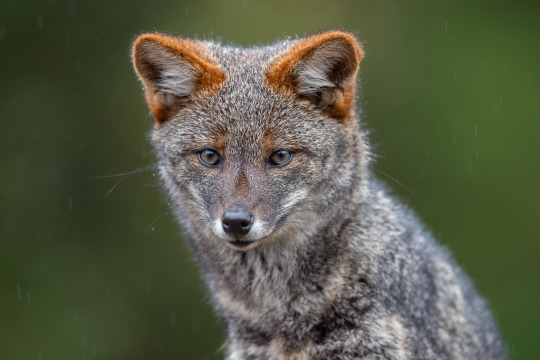
Darwin’s foxes are not actually foxes. True foxes belong to the vulpes genus, and these foxes belong to the lycalopex genus. They share this genus with the Sechuran fox, the hoary fox, the pampas fox, the culpeo, and the chilla. It was believed for a long time that the Darwin’s fox was a subspecies of the chilla, but they are now classified as a different species.
While most South American fox species prefer open grassland or scrub areas, Darwin’s foxes prefer dense forests. They are endemic to Chile, meaning they are only found there, with most individuals found on Chiloé island and in the Valdivian Coastal Range.
In these forests, Darwin’s foxes hunt for small animals like rodents and lizards along with fruit, eggs, beetles, and carrion. They are not strictly nocturnal, diurnal, or crepuscular, so they just hunt when they want to.

Like almost all other fox species, Darwin’s foxes prefer to live alone, only living in pairs during the breeding season and when they have kits.
Due to habitat loss, feral dogs, and being hunted for their fur, Darwin’s foxes are highly endangered with less than 1,000 individuals left. Conservation efforts have grown their population by small amounts but they are still in danger of extinction.
I rate this very curious fox 18/10. They may be “less wise” than other foxes but their charisma makes up for that
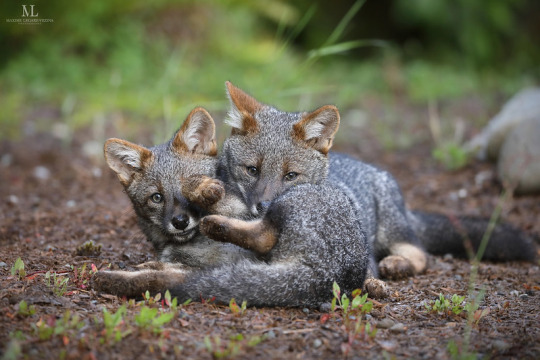

Photo Credits:
(1) Jono Dashper (2) Unknown (3) Maxime Legare-Vezina (4) Kevin Schafer
#Darwin’s fox#fox#animal#animals#nature#wildlife#canine#wild animals#world#canid#dog#foxes#zoology#biology#science#best animal ever#canines#dogs#south america#South American fox#charles darwin#Darwin
972 notes
·
View notes
Text
CTVT and a weird niche theory I fell down the rabbit hole about - giant transforming retroviruses???
This is a story about how a single line on a wikipedia page sent me down a rabbit hole of finding one scientist's fringe theory that's juuuust plausible enough to make me question everything while almost certainly being absolute fucking bunk.
Some background
So, on parts of tumblr at least we all know about Canine Transmissible Venereal Tumour, aka The Immortal Cancer Dog. For those who don't know, it's a cancer dogs get, usually on their junk, that unlike most other cancers, isn't made up of their own cells. The cells are actually all descended from this one dog or wolf that lived like 11,000 years ago and are, arguably, all technically that one dog. A dog that became a single-celled infectious disease.
We have a wealth of genetic, histological and observational evidence for this. As in, we know it what population of canids it came from, we know it's got a weird chromosomal structure compared to normal dogs, we know it's genetically distinct from the hosts. We also know it's not the only one out there: There's a similar thing in Syrian hamsters and also the famous Tasmanian Devil Facial Tumour Disease (DFTD).
Which made me pause when I was reading something on wikipedia about the devil facial tumour and saw a line mentioning that it was now known to be caused by a giant virus, much like CTVT. Which...huh? Oh I hadn't heard that afore.
Giant viruses
Ok so giant viruses are a thing and they're fuckin cool. They're a relatively recent discovery and comparatively huge, i.e. bigger than a bunch of bacteria. They were only discovered in 1981 and we still don't know an enormous amount about them but they're big and have large genomes and because of the way viruses are they're not easy to detect unless you're specifically looking for them.
They show up under microscopy (sometimes) and you can find them with genetic probes but you gotta already be looking for them to see that really. Current research though basically says they're more common than we think, just overlooked, and there's software out there that scans through genomic data to find sequences that might indicate their presence. There's even a possibility that one group might be involved in some cases of pneumonia in humans, though I need to stress that that's extremely not confirmed right now.
The "wait, what?" moment
So I mentioned that it was a line in the wiki article for DFTD that had me going "wait, really?", the line in question was this:
A study found evidence for an infectious agent resembling a giant virus that was capable of turning heathy cells into cancer cells. It was found to be a huge retrovirus with similar viruses being found in human and canine cancer cells.
Big If True.
So of course I check the source, which was a 2020 paper by Lusi et al. titled "A transforming giant virus discovered in Canine Transmissible Venereal Tumour: Stray dogs and Tasmanian devils opening the door to a preventive cancer vaccine".
Hang on, CTVT not DFTD? This is where some alarm bells went off because uh, as mentioned at the start, we know a shit ton about CTVT. Including the fact that it's all one specific dog. Which doesn't fit at all with the idea that it's caused by a virus transforming host cells into cancer cells.
So what fucking gives? What is this research that fully overturns decades of pretty conclusive research to the contrary?
Is this another case of Dr Barbara McClintock? Who spent decades being ridiculed by the scientific community over her wild theory that was, in fact, 100% right even if it seemed to fly in the fact of all prior evidence?
Or is this a Dr Donald I. Williamson situation wherein a scientist with appropriate training is just wildly but extremely vehemently wrong?
#science#genetics#cancer#canine transmissible venereal tumour#devil facial tumour disease#niche science#I'm breaking this up into several sections for readability#stay tuned for more#also feel free to ask any questions about stuff#I'll provide links to things as well but I know tumblr can bury posts with certain links in and idk if researchgate counts
25 notes
·
View notes
Text
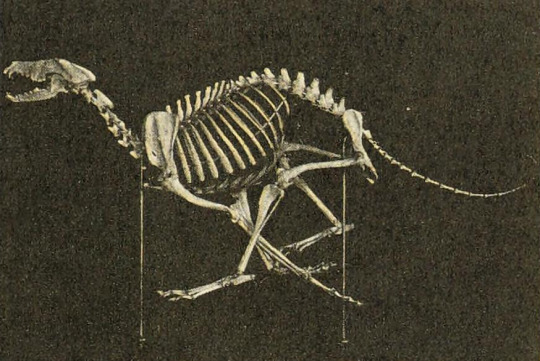
Mounted skeleton of a borzoi
By: Unknown photographer
From: The Illustrated Library of the Natural Sciences
1958
#animal death#domestic sunday#borzoi#dog#canine#carnivore#mammal#1958#1950s#The Illustrated Library of the Natural Sciences (1958)
164 notes
·
View notes
Text
[gripping the edge of the table] I need to do body horror to more of my OCs
#ragsycon exclusive#agent hill except the monstrous form of her bad arm is spreading into the rest of her body#and by the end of the year she'll be a writhing mass of tentacles instead of a person#dogmark except his canine features are less integrated into his human anatomy#teeth in wrong places and extra limbs and jaws that don't fit together and snarled claws and hollow ribs#fishwoman except she's been taken apart and put back together so many times for science#she can't remember if what's inside her is what's supposed to be there
70 notes
·
View notes
Text
How Do Dogs Prefer to be Fed?
(It Depends on Who You Ask)
Feeding dogs using food-delivery devices has become increasingly popular. Some owners use these gadgets as a supplement or occasional treat for their dogs, while others use them to provide all of their dogs’ meals. The general intent of providing food in this way, as opposed to a bowl, is as some type of enrichment – usually to stimulate both mental and physical…

View On WordPress
#Behavior and Training#canine behavior#canine enrichment#canine nutrition#canine science#canine welfare#dog#dog behavior#dog nutrition#dog science#dogs#feeding dogs#food-delivery toys
3 notes
·
View notes
Text



Spent the morning on working up toxicology cases and had a short seminar about animal physiotherapy in the afternoon! They showed the work on both canine and equine patients, very cool!
#studyspo#studyblr#medblr#medspo#bujo#vetblr#vetmed#veterinary medicine#veterinary science#med school#light academia#academia aesthetic#ipad#goodnotes#studying#uni#thesis#studyblr community#light aesthetic#physiotherapy#dogs#canine therapy#horses#equine medicine#equine physiotherapy
10 notes
·
View notes
Photo

#dogs#pets#canines#space#science#interstellar#vacuum#wordplay#wronghands#cartoon#comic#funny#john atkinson#humor#astronomy
271 notes
·
View notes
Text
Animal of the Day!
Rüppell’s Fox (Vulpes rueppellii)

(Photo by Helmut Boehm)
Conservation Status- Least Concern
Habitat- Northern Africa
Size (Weight/Length)- 3 kg; 45 cm
Diet- Insects; Small mammals; Birds; Grasses; Fruits
Cool Facts- It pays to have a small body and giant ears in the middle of a desert. The Rüppell’s fox are strictly monogamous and have a variety of burrows across their territory. The foxes are extremely affectionate towards each other, using a variety of barks and whistles to communicate. The pair sleep by day and hunt by night eating almost anything they can catch. Being one of the top predators in the arid Sahara , Rüppell’s foxes get their choice between juicy beetles and desert mice. Yum!
Rating- 11/10 (Long eared, long tailed, long legged baby.)
Animtober- Bad Dog (No dog is bad in this house.)
#Animal of the day#Animals#Mammals#Foxes#Canines#Friday#October 21#Rüppell’s fox#biology#science#conservation#the more you know#Animtober#Inktober#Bad dog
149 notes
·
View notes
Text
Crocuta crocuta
Although they have some dog-like traits, hyenas are only very distantly related to canines. They’re more closely related to cats. Their closest relatives, though, are actually mongooses (mongeese?) and civets.
Also known as laughing hyenas, spotted hyenas are the largest of four hyena species, weighing up to 140 pounds (63.5 kg)

Hyenas have a bad reputation. Although hyenas in some areas do kill livestock, this infamy is mostly due to myths and legends about them. They are believed to be “grave robbers,” or prone to digging bodies out of graves, as well as being stupid and cowardly. Spotted hyenas are even seen as demonic do to their wild laughing vocalization. The Lion King definitely didn’t help their case either, with spotted hyenas playing the role of dumb antagonists.
Another myth about hyenas is that they are hermaphrodites, meaning the species does not have distinct males and females. They do, but it’s almost impossible to tell them apart since both sexes have male genitalia. The females, which are more dominant than males, likely have male genitals due to high levels of testosterone.
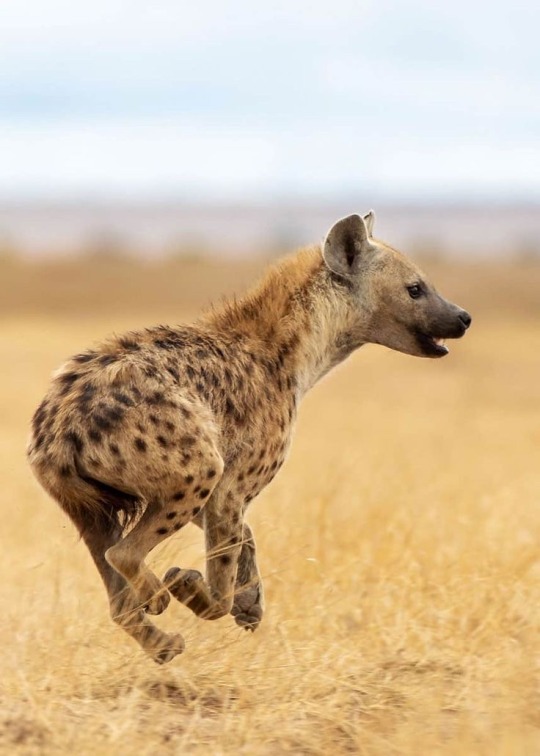
Hyenas are extremely social animals, forming close bonds and living in clans that can reach huge sizes, some with over 100 individuals. They are considered to be some of the most socially complex animals in the world and are highly cooperative with other hyenas, scoring higher than primates on tests that involve working with others.
This cooperative behavior is how they hunt (or steal). Large animals like wildebeest, zebra, antelope, and impala are targeted by groups of hyenas. Hyenas also get food by using large groups to steal prey from other predatory animals like lions, leopards, and African wild dogs. Every part of these stolen carcasses can be eaten, including the bones. This is thanks to extremely powerful jaws that give the hyena a bite force of 1100 PSI (almost as much as a grizzly bear).
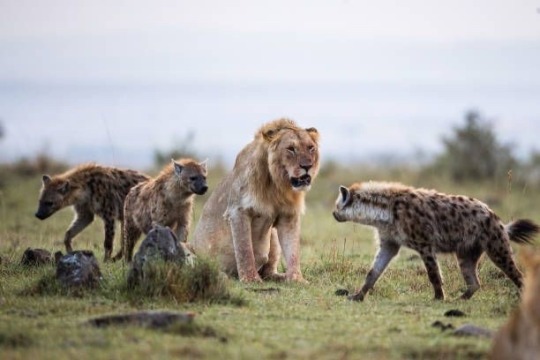
Hyenas also make some of the best parents in the animal kingdom. They have up to four cubs per litter, all of which are all born jet black, and they care for them for over a year. The mother also plays with them for hours at a time. They sometimes have to leave their cubs for long periods of time in order to hunt, but their extremely rich milk sustains the cubs through this time. Hyena milk is higher in protein and fat content than any other terrestrial carnivore.
I rate the spotted hyena 26/10 I love them so much I don’t even know what to say


Photo credits:
(1) Will Burrard-Lucas (2) Unknown (3) Kristian Sekulic (4) Carole Deschuymere (5) Keith Connelly
#i ran out of canines to write about so it’s hyena time#hyena#hyaena#hyenas#animals#biology#nature#science#wildlife#zoology#animal#wild#spotted hyena#spotted hyaena#spotted hyenas#african animals#crocuta crocuta
857 notes
·
View notes
Text
hi there! 🌿
im an aspiring wildlife biologist intending to major in wildlife bio and minor in applied ecology. I'd like to go to grad school studying wolves or canines in the future as well. i created this blog to motivate me with my studies and to reblog posts relating to my interests 🍄
i would love to chat if you have similar goals or if you are majoring/already majored in what i mentioned above! I really want to make more friends with similar interests! 🍃

#studyblr#biology#wildlife#wildlife biology#zoology#science#science major#biology major#plant biology#botany#animal science#study blog#study motivation#studyspiration#introductory post#blog intro#ecology#canines#canidae#wolves#conservation#environment#biodiversity
123 notes
·
View notes